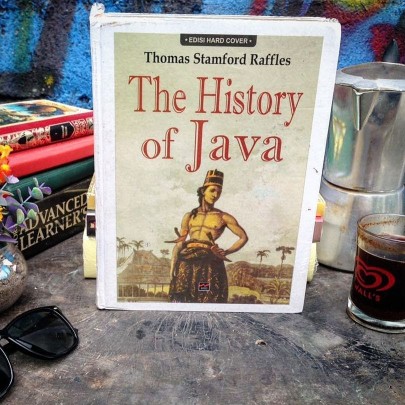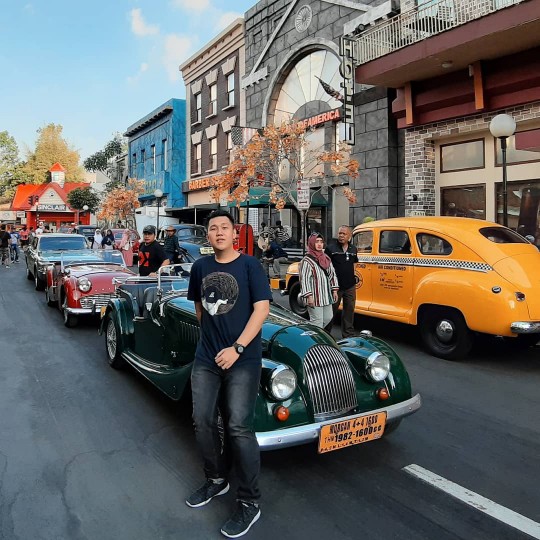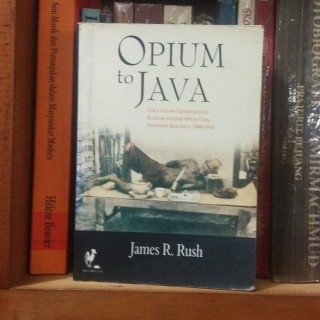javaprivatetour.com – Greetings, fellow explorers and travel enthusiasts! Today, let’s embark on an enchanting journey into Jakarta’s cultural tapestry, exploring the fascinating world of Ondel-Ondel. But before we dive into the heart of this captivating tradition, let’s rewind a bit and set the stage for our cultural exploration.
Picture this: the vibrant streets of Jakarta, pulsating with life and history. Amidst the modern skyscrapers and dynamic energy, a cultural gem steals the spotlight – the iconic Ondel-Ondel. These larger-than-life puppets, standing at around 2.5 meters tall, have transcended their origins as protectors against malevolent forces to become a beloved folk art performance.

Historical Roots and Rituals
As we delve into the rich history of Ondel-Ondel, it’s crucial to understand its roots in Betawi culture. Originally known as barongan, these puppets were believed to embody ancestral spirits guarding villages. During times of epidemic, the community would parade the barongan through the streets, a ritual believed to ward off disasters. The intricate process of puppet creation, accompanied by rituals and offerings, reflected the sacred nature of their protective role.

Cultural Fusion and Influences
Fast forward to the present day, and Ondel-Ondel has evolved into a dynamic showcase of Betawi’s multicultural influences. The Betawi people, residing in Jakarta, have absorbed elements from Javanese, Sundanese, Ambonese, Portuguese, Chinese, and Arab cultures. The barongan, for instance, bears resemblance to Bali’s barong, showcasing a fusion of artistic elements from various traditions.
Evolution and Modern Significance
Ondel-Ondel’s journey through time also embraces influences from European traders, with records dating back to 1605. The transformation from barongan to the now-familiar Ondel-Ondel gained momentum in the 1970s when the legendary Benyamin Sueb popularized the term through his song “Ondel-ondel.”
The evolution of Ondel-Ondel continued as Jakarta’s Governor Ali Sadikin declared it the city’s icon. The once formidable and mystical appearance softened into a more friendly and approachable demeanor, shedding its ritualistic practices.
Islamic Influences and Symbolism
Islamic influences further shaped Ondel-Ondel’s costumes, with subtle changes reflecting traditional Muslim attire. The puppets now sport headgear resembling a kopiah, while vibrant sashes and belts gave way to checkered sarongs placed around the neck.
Craftsmanship and Visual Appeal
Crafted from various woods such as randu, kapuk, cempaka, kenanga, or rambutan, Ondel-Ondel’s body incorporates dongdang, a bamboo cage-like structure. With a diameter of about 1.5 meters and heights reaching 4 meters, these puppets are a sight to behold.
The iconic red-faced male and white-faced female Ondel-Ondel represent a balance of fierce protection and nurturing warmth, akin to Indonesia’s national flag, where red signifies courage and bravery, while white symbolizes purity.
Conclusion and Call to Adventure
Today, Ondel-Ondel stands not only as a cultural relic but also as a testament to Jakarta’s dynamic history and multicultural identity. As you explore the vibrant streets of Jakarta, let Java Private Tour be your guide to unlock the secrets of Ondel-Ondel and many more enchanting wonders. With certified local guides, flexible schedules, and a fleet of private vehicles, Java Private Tour ensures a personalized and memorable journey through the heart of Java.
So, fellow adventurers, when in Jakarta, let the rhythm of Ondel-Ondel’s dance guide you, and Java Private Tour be your trusted companion in unraveling the treasures of this fascinating city. BOOK HERE to embark on an unforgettable adventure!
You May Also Like
 Exploring the Unique Charm of Candra Naya, A Cultural Heritage Amidst Jakarta’s Skyscrapers
Exploring the Unique Charm of Candra Naya, A Cultural Heritage Amidst Jakarta’s Skyscrapers
 Exploring the Unique and Authentic Betawi Culture in Various Corners of Jakarta
Exploring the Unique and Authentic Betawi Culture in Various Corners of Jakarta
 Time-Warped: Exploring Jakarta’s Rich Heritage at Fatahillah Museum
Time-Warped: Exploring Jakarta’s Rich Heritage at Fatahillah Museum
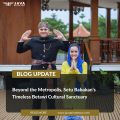 Beyond the Metropolis, Setu Babakan’s Timeless Betawi Cultural Sanctuary
Beyond the Metropolis, Setu Babakan’s Timeless Betawi Cultural Sanctuary
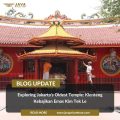 Exploring Jakarta’s Oldest Temple: Klenteng Kebajikan Emas Kim Tek Le
Exploring Jakarta’s Oldest Temple: Klenteng Kebajikan Emas Kim Tek Le




